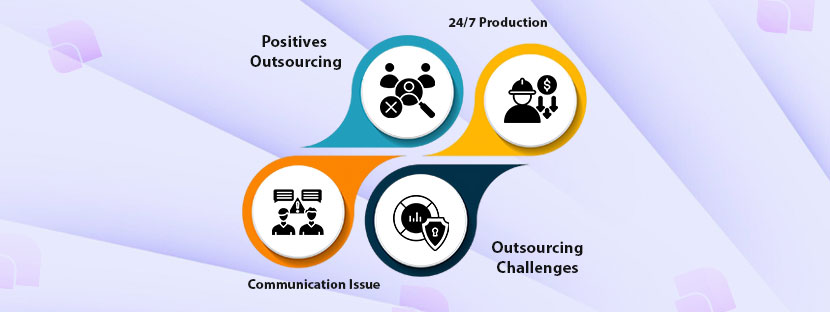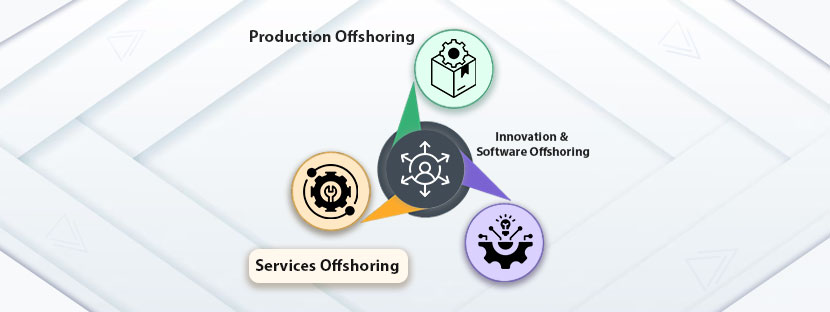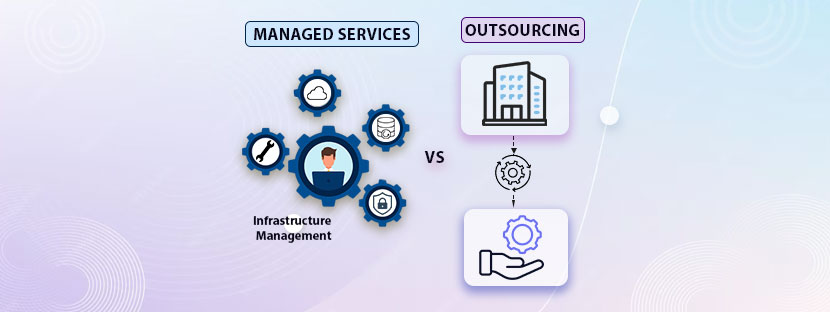Juggling multiple tasks all at once is not okay…
Your internal team may be overwhelmed and lack the space to handle more tasks. Now it’s your time to assess the pros and cons of outsourcing and delegate your tasks. Yes! Outsourcing can save you. Plus, it’s popular and can save you costs, too.
Did you know that more than 300,000 jobs are filled in the United States via outsourcing only?
Outsourcing is cost-efficient and provides extended flexibility that regular in-house teams cannot accomplish. In reality, more than 70% of companies that prefer outsourcing state that cost reduction is the primary reason for them to choose the outsourcing path.
Anyway, some companies (nearly 20%) also stayed reluctant when it comes to outsourcing. They showed concerns related to quality matters, as outsourcing can lead to poor quality.
Still, outsourcing is gaining popularity among both big as well as small businesses because of various factors. You need to analyze the pros and cons of outsourcing before deciding anything for your business. Well, this blog will make that assessment for you. Here we will go through a critical understanding of outsourcing by taking into account both the advantages and disadvantages of outsourcing in the picture.
Shall we start?
A Comprehensive Assessment of the Pros and Cons of Outsourcing
On a global scale, IT jobs are highly outsourced, where South and Southeast Asian countries being the popular destinations for outsourcing. Companies from the US, Canada, and Europe outsource IT staff to manage their operations. For them, outsourcing is cost-efficient and an easy way to get their job done without any hassle.
From data entry to performing annotation for AI (Artificial Intelligence) development, IT outsourcing is one of the things that is gaining all the limelight. Apart from IT, the rate of outsourcing to the manufacturing and human resources sectors is quite high. Outsourcing has some challenges too; we will discuss them later. But first, let’s start with the positive aspects of outsourcing.
Positives of Outsourcing
There is a multitude of factors that can support you to try outsourcing if you haven’t tried it yet. Some of the following factors can definitely influence you to look for outsourcing. Let’s check it out.

⏵ No more hiring
Yes! You can tell your HR to stop the hiring process. Gradually, you can close the HR department too, if you strictly follow the path of outsourcing. Here, you don’t have to hire people; rather, you’ll be signing contracts.
Some companies, like outsourcing providers, will take care of your employees’ needs. Hence, you’ll get the talent that you exactly need through outsourcing, without the HR channels. Not only can you save the hiring costs, but you also have the scope to save costs on training, promotions, and other costs that you have to take as an employer.
Now, in 2025, getting the right talent for your organization via the recruitment process is a tough process. Plus, retaining the talent within the organization is a risky deal. But when you opt for outsourcing, these things must not bother you at all. Among the pros and cons of outsourcing, saving money on HR costs takes the top position in the pro list.
⏵ Access to talent directly
In traditional paths or the HR source, getting the right talent that suits your operational requirements is a tough deal. You need to go through a detailed process to find and attract the right type of person to get your job done. However, the process is time-consuming and unnecessarily lengthy. To make this process short and get access to reach out to the right talent, outsourcing is the best path.
When you outsource, you can look outside of your country to get the right talent for your work. You don’t need to hire them or get them implanted into your in-house team. All you need to do is sign a contract with the service provider, and that’s it. Employees sitting in other countries in a close monitoring setup will handle your tasks. They can all do your work as an in-house team, but you don’t need to hire them. Most interestingly, you’ll be exposed to the global talent pool directly without any barriers like hiring and management.
⏵ Minimize labor costs
The cost of hiring in-house employees is greater than outsourcing. Thus, outsourcing can help you minimize labor costs at a significant level. Besides providing you with the right talent, outsourcing also saves you from unnecessary costs on hiring. When you hire people, you are not sure about whether they will stay or move on. Imagine how much you spend on job posts, scheduling, taking multiple rounds of interviews, and additional processes to get the right type of people for your work. But in the end, the person let you down by accepting offers from other companies.
As an employer, you may have to pay employee costs like health benefits, pension funds, provident funds, gratuity, etc. To manage all these employee benefits, you also need to hire people. This adds up to the overall costs to your company, which you need to bear unnecessarily. However, outsourcing can relieve you comprehensively as you don’t have to take up any HR-related costs at all.
⏵ Save on infrastructure
Businesses that are thriving on strategic building blocks can get the maximum benefits from outsourcing. You can save on infrastructure. In IT outsourcing, you can access everything through the cloud channel. You don’t have to invest in hardware or software tools to start with outsourcing. You can start outsourcing anytime if your outsourcing partner allows it. For sure, you don’t need to pay anything additional for infrastructure. You’ll have everything when you start.
To start outsourcing, here’s our guide on outsourcing that you can refer to for more clarity.
⏵ 24/7 Production
Some sectors like marketing, e-commerce, healthcare, etc, need 24/7 support to manage regular operations. However, it becomes challenging for you to manage operations in 24/7 circles if you have an in-house team for that. For better results, you need to try outsourcing. It allows you to get 24/7 support without burdening your internal team.
Outsourcing cuts the time and regional barriers. You can get your work done at your time, irrespective of the timezone you are in. An outsourcing service provider will make sure that you get your production run on time smoothly.
⏵ Bring the expertise
Outsourcing not only cuts costs but also brings expertise to the organization. This means you can get the experts engaged in your work who provide higher value. You do not have to compromise with the internal team that you have. If your skilled in-house team is already doing various things, then you must not add extra work to it. You can simply delegate your work to any outsourcing company. This way, you can get your work done, and you don’t have to compromise on quality, too.
⏵ Get the work done by motivated people
Outsourcing remote personnel via third-party contractors is always a great choice. Because you’ll have the opportunity to work with highly motivated people who are deeply interested in helping you out. Often, it has been seen that outsourcing service providers manage their in-house employees exceptionally. They pay them well, incentivize them well, plus provide them with the opportunity to explore different sets of tasks. This helps them to retain the best talent and serve their clients with exceptional results.
Overall, you’ll get motivated people who work with you with all their dedication. This you might not see in your existing internal team quite often. Hence, it’ll be best for you to outsource for managing your high-end tasks where complete dedication is needed.
Challenges of Outsourcing
After analyzing the positive sides, it’s a bit odd to explain the challenging side of outsourcing. But, it’s a fact that outsourcing comes with some challenges. Hence, we need to check each challenge carefully and thoroughly to understand how we can overcome them.

To assess the pros and cons of outsourcing, you can find the following challenges when you outsource. However, your aim here is to develop a mitigation strategy to face all these challenges without a drawback.
⏵ Lack of control over the team
First, let us accept that an outsourcing team will not behave like your internal team. They will connect you for your project, and they’ll leave when it’s done. You cannot access them after the expiration of your contract. If you want to connect them again for your work, then you need to sign a deal again. So, there is a defined boundary between you and your outsourced team.
Now, the level of supervision you provide to your internal team often gets neglected in your outsourcing team. Because the outsourcing team already knows the job you don’t have to provide them with any training. The team you’ll get via outsourcing will work based on the signed instructions, you cannot change it verbally. Therefore, you may have lost control over the outsourcing team.
⏵ Communication Barriers
Asia is a popular destination among American companies, especially India for outsourcing IT-related services. So, it’s natural that the timezone and communication method will be different here. While communication barriers are not a major issue in outsourcing. Outsourcing companies from India properly take care of clients’ needs, and therefore, they hire fluent English-speaking employees to handle operations. Hence, issues with communication are not a big deal here.
From a technical perspective, communication barriers can be created if there is no proper communication channel established. A dependable internet infrastructure and connection matter a lot when it comes to establishing communication. In some cases, communication issues are created due to unsent messages or broken messages. This happens only due to poor connection and infrastructure. Thus, this challenge can be tackled with an improved internet connection and infrastructure.
⏵ Quality can decrease
Issues with quality can come when you choose an outsourcing partner that offers you with cheap price. There’s a standard price you can pay to get your work done. You must avoid paying below the set standard price. This often leads to quality issues and devalues outsourcing overall. To eliminate quality issues, you need to explain your expectations clearly so that the service provider can understand them well.
⏵ Can affect company culture badly
Before starting to outsource, you need to assess the pros and cons of outsourcing. Sometimes, outsourcing can badly affect company culture and leave a long-lasting impact on your process. Your internal team can be affected the most. They might feel they are unwanted when they see work getting done via an outsourced team. Added to this, it can create confusion between your team members regarding the tasks that are proposed to be outsourced.
Without a clear boundary, task outsourcing can confuse your internal team and create a workflow barrier. Thus, you need to build your company’s culture first and then have to outsource.
⏵ Data security challenges
Outsourcing typically means that an external team will perform your task in your process. Thus, it’s quite natural that you have to share data credentials with your outsourcing partner. Hence, you need to take special care at this time to protect your data. You can sign a non-disclosure Agreement (NDA) with your outsourcing service provider to protect your data from potential misuse.
Where to Outsource?

After assessing all the pros and cons of outsourcing, you need to take action. Despite all the challenges, outsourcing can be your game-changer strategy if you channel it through the right place. For that, you need to know where to outsource your tasks. For your reference, Asian countries are dominating in the field of outsourcing with their extended service vertices.
Indian companies are at the top list when it comes to outsourcing IT and data-related tasks. From data entry to data annotation, Indian companies are the top players. India is also a skill hub where you can get all skilled employees for IT jobs. That’s the main reason why companies from America and Europe are targeting India to get skilled staff for their operations. The Indian time zone also favors American and European time zones. It means you can get your work done while you’re sleeping.











